The Complete Book of Ground Covers
Review of Gary Lewis, The Complete Book of Ground Covers: 4000 plants that reduce maintenance, control erosion, and beautify the landscape, Timber Press, 2022.
This is one I didn’t know I’d been waiting for, and I think it’s going to change my garden.
I must confess I’ve never paid much attention to ground covers before. Like many, I suspect, I considered them rather uninteresting plants with the sole function – fingers crossed – of keeping down weeds. It’s only recently, when we bought a house and I found myself faced with the previous owner’s disastrous ground cover decisions, that I started to give them any thought at all. Ivy rampages through our back garden while the front is thick with lily of the valley that has been allowed to choke everything in sight (including, some suspicious little bones might suggest, a few neighborhood cats). What a shame the previous owner of my house didn’t have the benefit of reading this book before deciding what to plant where. My life would have been so much easier.
Gary Lewis’s The Complete Book of Ground Covers, recently published by Timber Press, proves just how much more there is to these frequently overlooked plants: how important, particularly in environmental terms, they are for our gardens and how very beautiful they can be. There’s a lot more to selecting them than a quick trip to the local garden center, and with Lewis’s clear and detailed guidance, you can make them an exciting as well as useful part of your garden design.
This is, above all, a reference book, a very model of its kind, and it’s heartening for gardeners to see that, in the age of the internet search where Wiki reigns supreme, publishers like Timber Press still understand the value of this kind of specialised book. No amount of googling is going to provide you with anything close to the many years of accumulated knowledge this book provides.
Lewis starts with a general introduction to ground covers, setting out the ways in which different plants spread, and then moves on, in ‘Planning for Success’, to a a comprehensive discussion of everything you could possibly need to know about the selection, planting, maintenance, and propagation of ground covers for your particular site and climate, taking into account not just soil, but light and moisture levels and various environmental stresses.
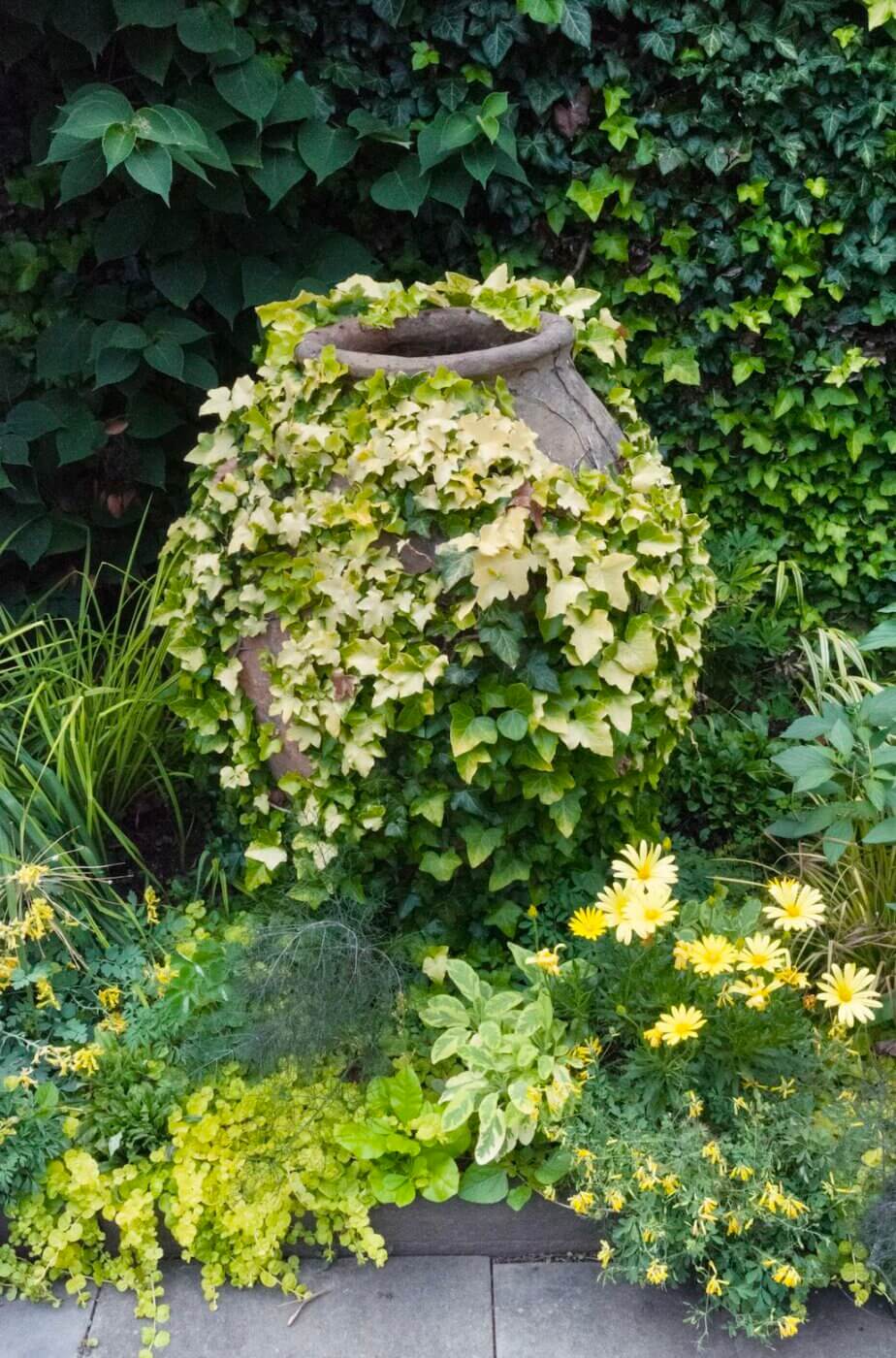
An example of just how beautiful ivy can be. In “this study in yellow at Chanticleer Garden, Pennsylvania, the gold foliage of the Hedera helix that festoons the container and the Lysimachia nummularia ‘Aurea’ and Salvia officinalis ‘Icterina’ at its base set and hold the theme.” Taken from The Complete Book of Ground Covers © Copyright 2021, by Gary Lewis, photograph by Gary Lewis. Published by Timber Press, Portland, OR. Used by permission of the publisher. All rights reserved.
One of the things I particularly noted here is the sensible and balanced approach to the issues surrounding native plants and aggressive and invasive plants. There are no sweeping judgements about such matters and Lewis is at all times rightly insistent on the need to consider climate and context. While there are many advantages to integrating native plants and nativars (cultivars of native plants) into the garden, being native does not guarantee success. ‘For instance,’ he notes, ‘urban and suburban soil conditions can differ greatly from those of native habitats.’
Design strategies
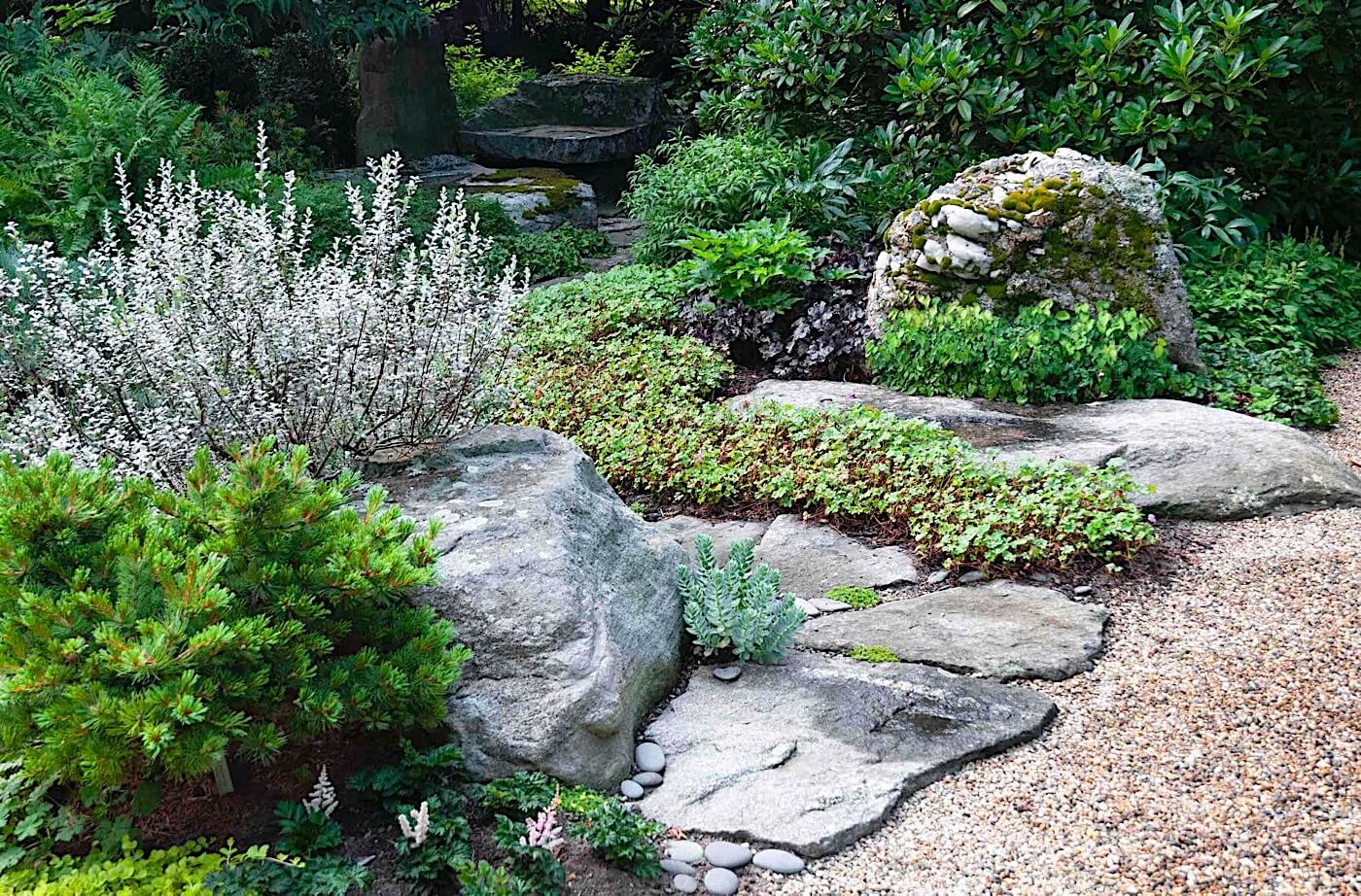
Following this comes the section I found most absorbing: ‘Designing with Ground Covers’. Here, Lewis addresses such topics as the most suitable ground covers for different styles of garden, and various design strategies including edging and transitioning. Ground covers can, he shows, ‘be used to alter the perception of space in a garden and create or support optical illusions’. A shrubby ground cover, for example, can soften a slope and make it seem less steep. Ground covers can create illusions of length and depth; they can divide space and make it smaller and more intimate. And they can direct movement through a garden. While some of these strategies are familiar to gardeners, it’s unusual to see them considered in the context of ground covers, and so this is all very intriguing.
One of the things I appreciated about many of Lewis’s design suggestions was how easy it would be to incorporate them without having to make major modifications to the garden as a whole. I already have plans, for example, to use ground covers in two areas in order to create, as Lewis puts it, ‘an area of negative space around a focal point to give it prominence and pride of place’. I was particularly taken by the way this is achieved with the ferns and fountain in the image below. Such a simple idea, really, but so lovely.
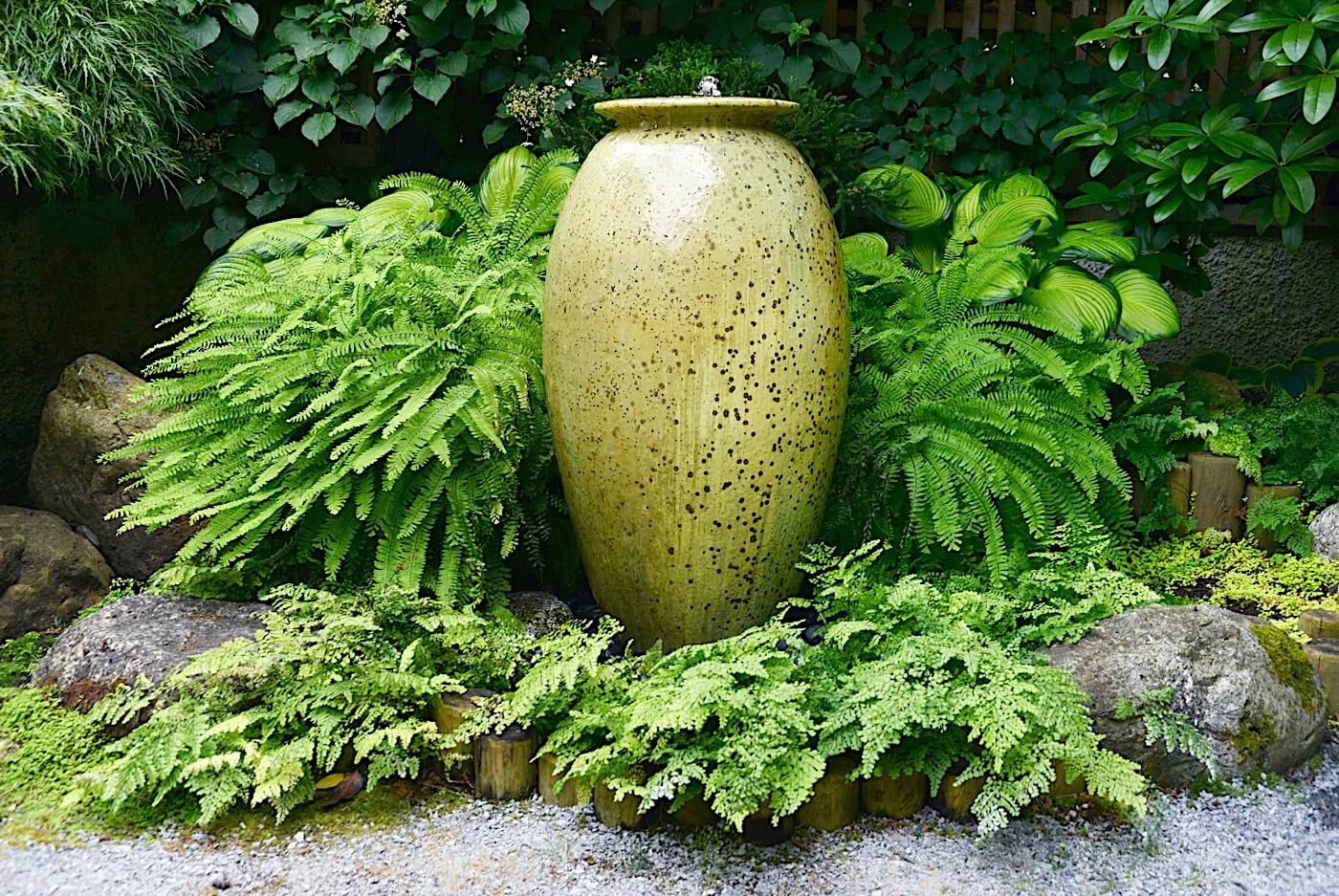
Being someone who thoroughly dislikes the parks and gardens approach of planting shrubs or stands or perennials amongst a sea of brown mulch, the idea of using ground cover plants as a ‘green mulch under shrubs and trees’ also resonates with me. Ground covers are a far more appealing way of covering bare soil – and they usually smell far better than mulch too.
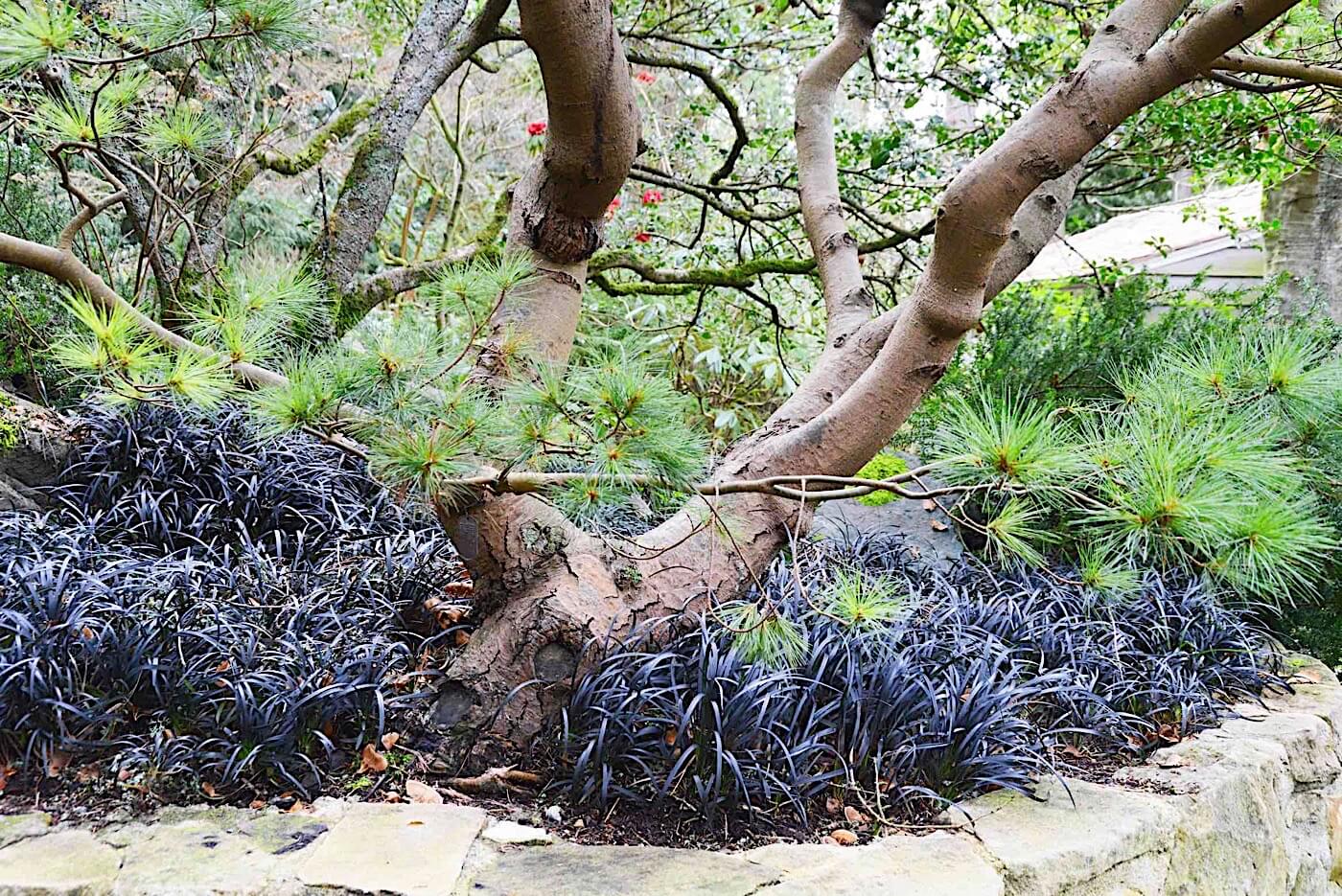
Environmental issues
Perhaps more important than the aesthetic advantages are the environmental, and Lewis makes the reader aware of just how critical it is that ground covers should play an important role in contemporary gardens. They can prevent erosion and aid the penetration of water, for example, by capturing and composting fallen leaves and fruits, and, more generally, they help create a more natural system in the garden, a replication of that found in the wild. They are good replacements for hardscape surfaces such as concrete, and in the urban environment can keep the ground cool and even ‘significantly reduce noise pollution’.

Since so many gardens nowadays are designed with the goal of attracting wildlife, the elimination of the lawn seems the obvious next step. The maintenance costs in time and money of lawns are immense, and their environmental impact is overwhelmingly negative.
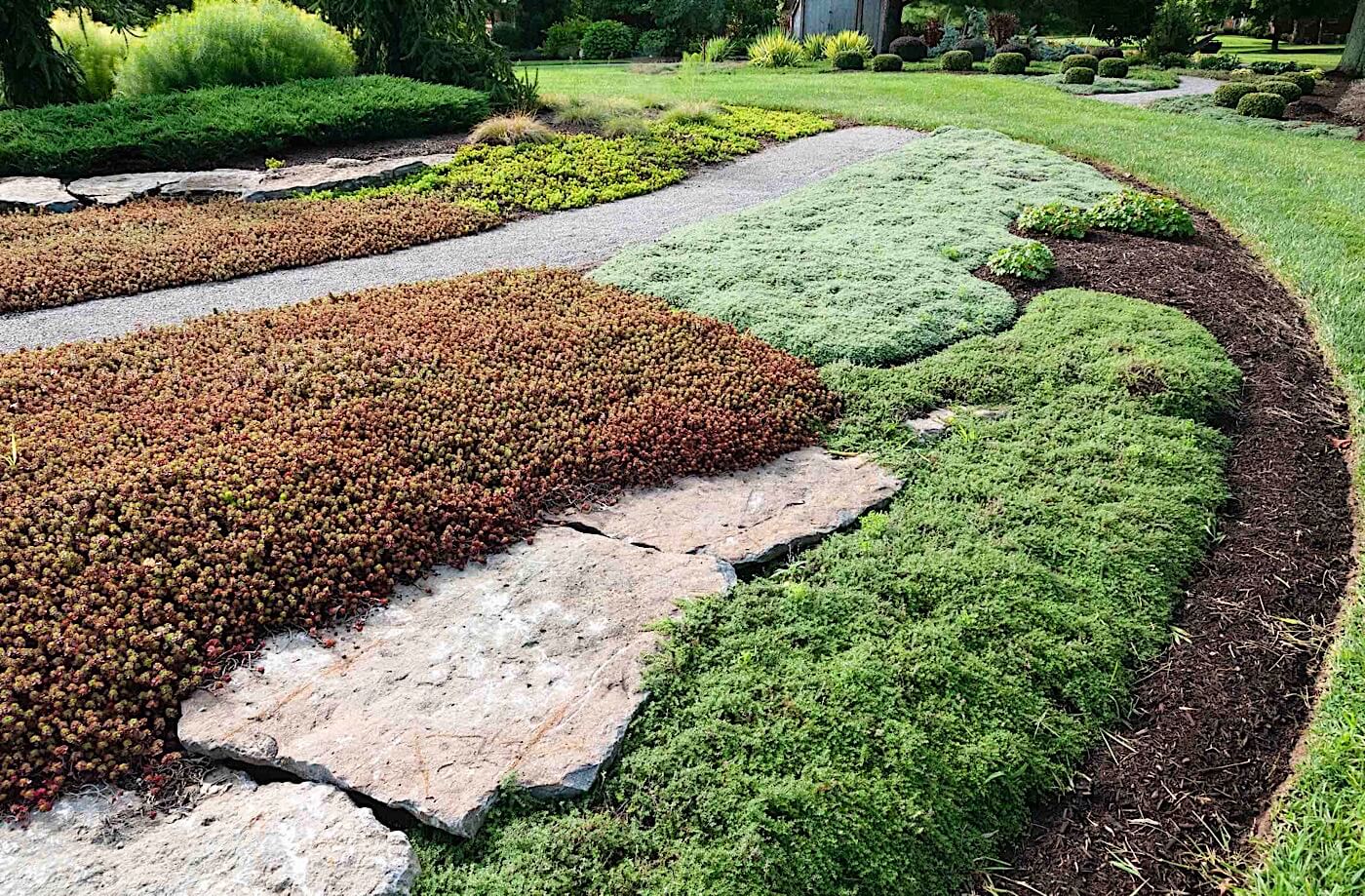
Ground covers are excellent lawn replacements: no mowing, trimming, or edging, no noisy or polluting machines needed for their upkeep. And I’m sure that in itself will convert many readers to the joy of ground covers. Lewis suggests that replacing grass with a diverse mixture of native plants, nativars, and non-native plants will be most effective in supporting the most diverse range of wildlife, both in terms of food and habitat. There’s a useful list of plants that would be good alternatives to the basically dead space of a lawn and have significant benefits for wildlife.
This section also provides detailed and well-illustrated suggestions for ground cover combinations, including general advice about what makes a dynamic combination as well as examples of specific plants that make effective companions. And there are ideas for fragrant ground covers, and plants for challenging conditions, including a very welcome list of ground covers that are deer and rabbit resistant.
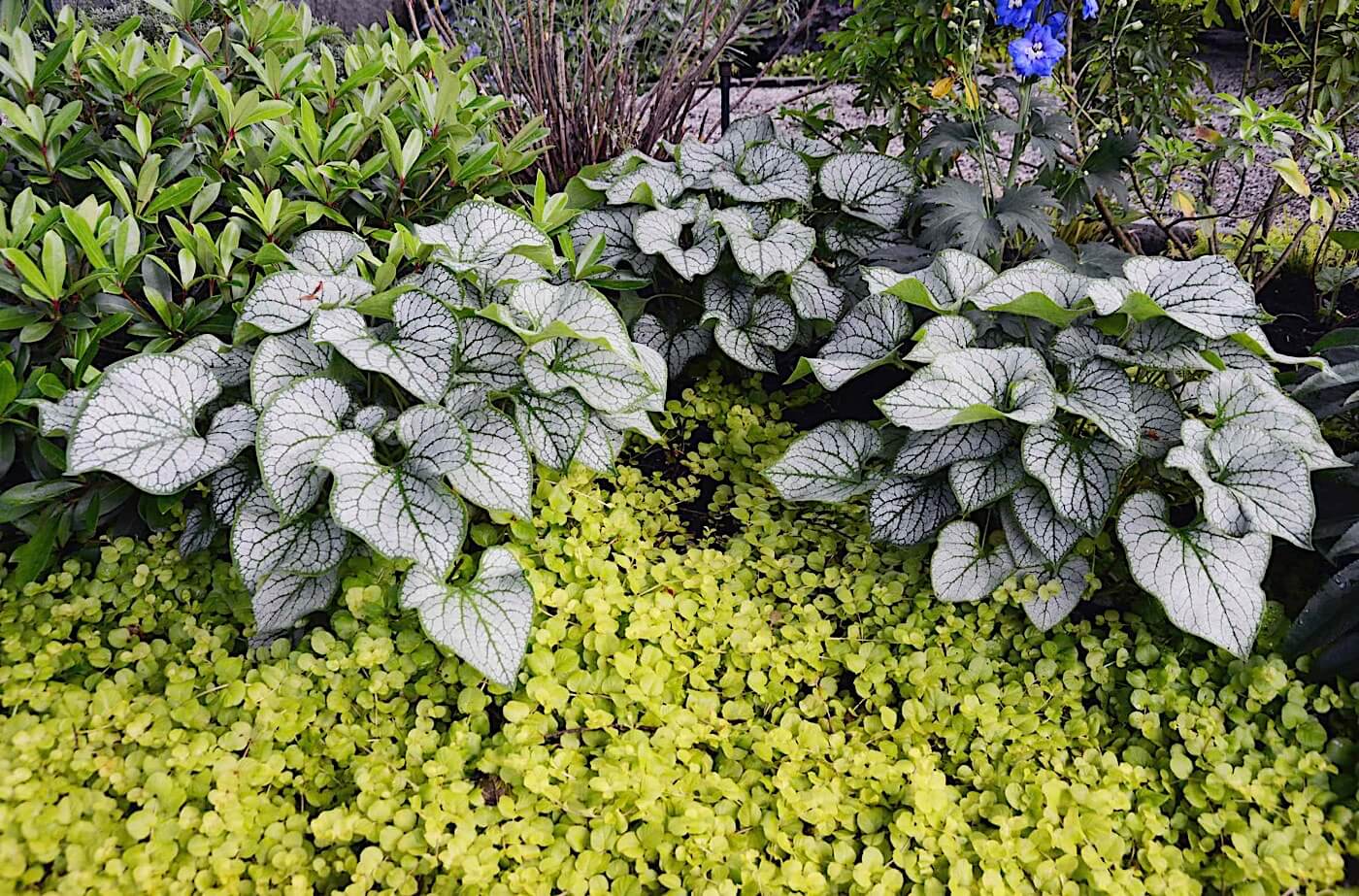
The last and major section of the book is ‘Ground Covers A to Z’. This listing of over 4000 plants is, thank goodness, ordered through botanical plant names. My pet peeve at the moment is gardening books that rely only on common names and send me irritably searching to find out what on earth, for example, is Oregon grape, instead of using the word we all have in common: Mahonia. Granted, the botanical names may change at times but at least they remain consistent in their changes across regions and countries.
Lewis lists here the vast majority of ground cover species and their cultivars grown in the temperate regions, with an emphasis on North America, but also paying some attention to the UK and Europe. Information for each entry includes plant family, hardiness, origin and habitat, culture, uses, propagation, as well as relevant species and selections for each genus. It is a veritable mine of information, and you can certainly understand why this book was nine years in the making.
While a beginner gardener might feel a little overwhelmed by the sheer amount of information about ground covers in this book, it is precisely this comprehensiveness, the vast expert knowledge conveyed in clear and precise prose, that will make The Complete Guide to Ground Covers the standard reference book for serious gardeners, landscapers, and designers for many years to come.
Receive updates via email of new articles.
Receive updates via email of new articles.
Latest Articles

Crazy about Cosmos

Flowers for summer bouquets I

Ranunculus Revisited

Review of Rachel Siegfried’s The Cut Flower Sourcebook

Tulips

Victorian flower arranging

Easter lilies

Spring has sprung: here comes the daffodil

Pleasures of the nose: fragrant flowers in early spring

Violets for Valentine
Subscribe to My Blog
Enter your email address to receive an email notification whenever a new article is posted.

2 comments
Susan Hamilton
I know what book I will be reading as I hobble around this December. It finally arrived just before I set off on my unexpected travels. I already foresee that I am going to need quite a bit of that Lysimachia nummularia ‘Aurea’ — I think we saw this at the HCP, where it was grouped with something very bold and purple. I shall have to dig up that combination too.
Glennis Byron
That’s right. I can’t remember what it was paired with at HCP, but it was very striking. Someone dug up half of my Lysimachia thinking he was doing some ‘weeding’, but there’s still a lot and it spreads madly, rooting as it goes. I’ll pot some up for you in the spring.